Table of Contents
Overview – Motor Processing
Motor processing is the coordinated control of skeletal muscle movement through a hierarchy of brain regions. From the conscious decision to move through to patterned execution, multiple brain structures and feedback loops refine strategy, tactics, and action. Understanding this hierarchy is crucial for localising motor deficits and interpreting movement disorders.
Motor Control Hierarchy
1. Ready – Strategy (What to do)
- Prefrontal Cortex: Decides the goal of the movement
- Somatosensory Association Cortex (Area 5): Provides proprioceptive input
- Basal Ganglia: Bridge between strategy and tactics
2. Set – Tactics (How to do it)
- Basal Ganglia
- Pre-Motor Area (PMA)
- Supplementary Motor Area (SMA)
These regions plan and sequence complex learned movements
3. Go – Execution (Do it)
- Primary Motor Cortex (M1)
- Cerebellum
- Brainstem
- Descending Tracts
- Spinal Nerves & Lower Motor Neurons
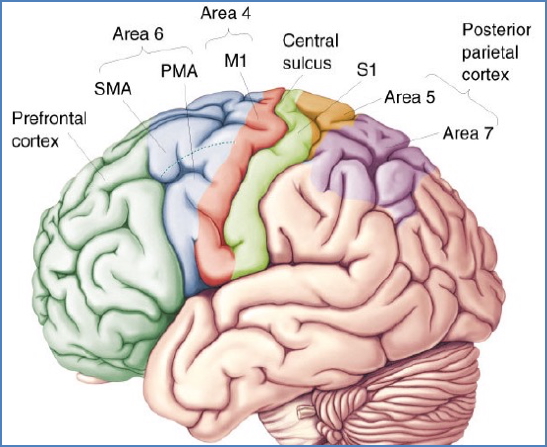
Functional Roles of Key Regions
Prefrontal Cortex
- Initiates voluntary motor planning
- “Managerial” role – sets movement goals
Somatosensory Association Area
- Informs brain of body position in space
- Enables spatial awareness essential for precise movement
PMA & SMA
- Store and plan skilled, learned, patterned motor sequences
- Initiate motor memory-driven tasks (e.g. playing an instrument)
Primary Motor Cortex (M1)
- Initiates voluntary and skilled movement
- Exhibits somatotopy (motor homunculus)
- The larger the cortical area, the finer the movement
- Input sources:
- Direct: From prefrontal cortex, SMA/PMA, somatosensory cortex
- Indirect: From cerebellum (via thalamus)
- Broca’s area: Region of M1 that controls speech muscles (face, tongue, jaw)
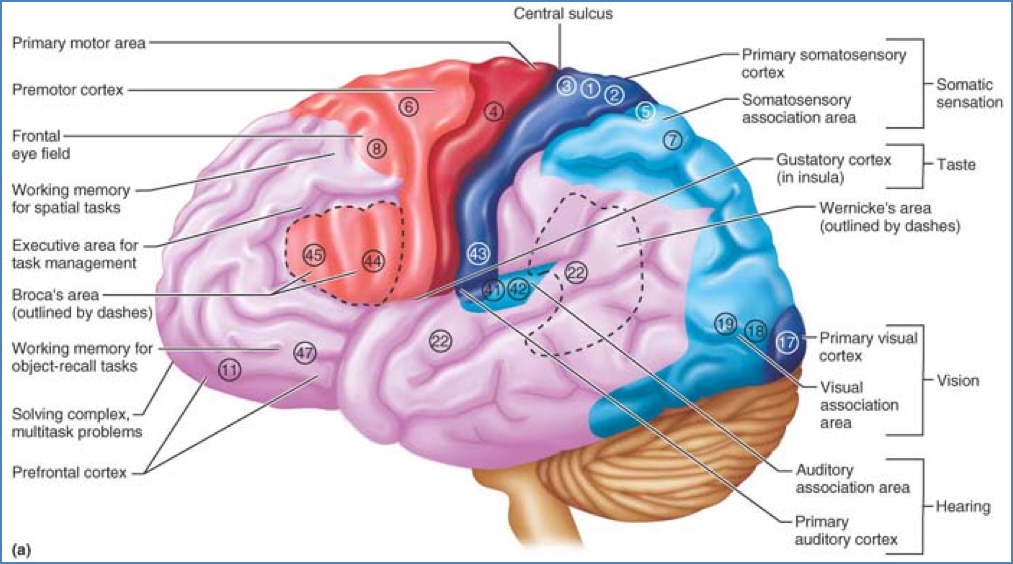
Basal Ganglia
- Critical for action selection and initiation of learned movement patterns
- Supports motor control, motor learning, habitual movement, and emotional-motor integration
Internal Loop:
Cortex → Basal Ganglia → Thalamus (VLo) → PMA/SMA → Cortex
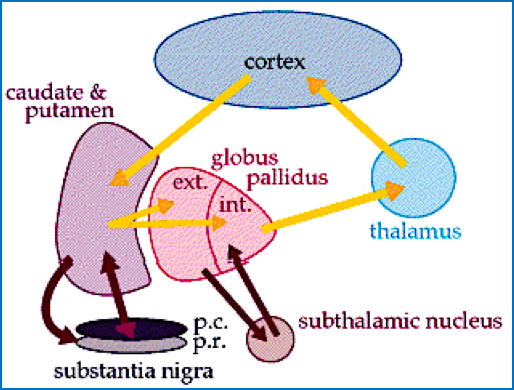
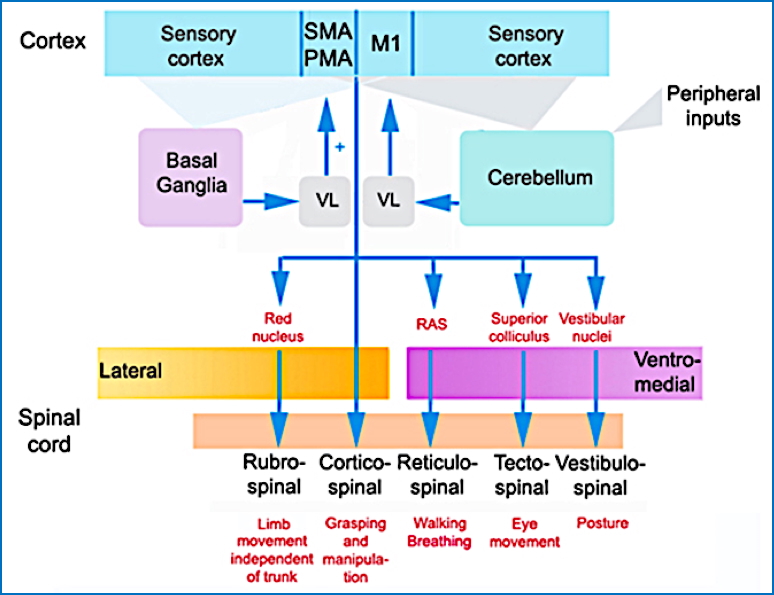
Globus Pallidus → Thalamus (Inhibits Thalamic-SMA Activity → Keeps the SMA ‘Quiet’)
Structure & Function:
- Striatum (Caudate Nucleus + Putamen):
- Caudate: cognition & behaviour
- Putamen: automatic movements
- Globus Pallidus:
- Spontaneously active → inhibits thalamus to maintain SMA silence until required
- Associated Structures:
- Subthalamic Nuclei
- Substantia Nigra: motor planning, eye movement, reward/learning
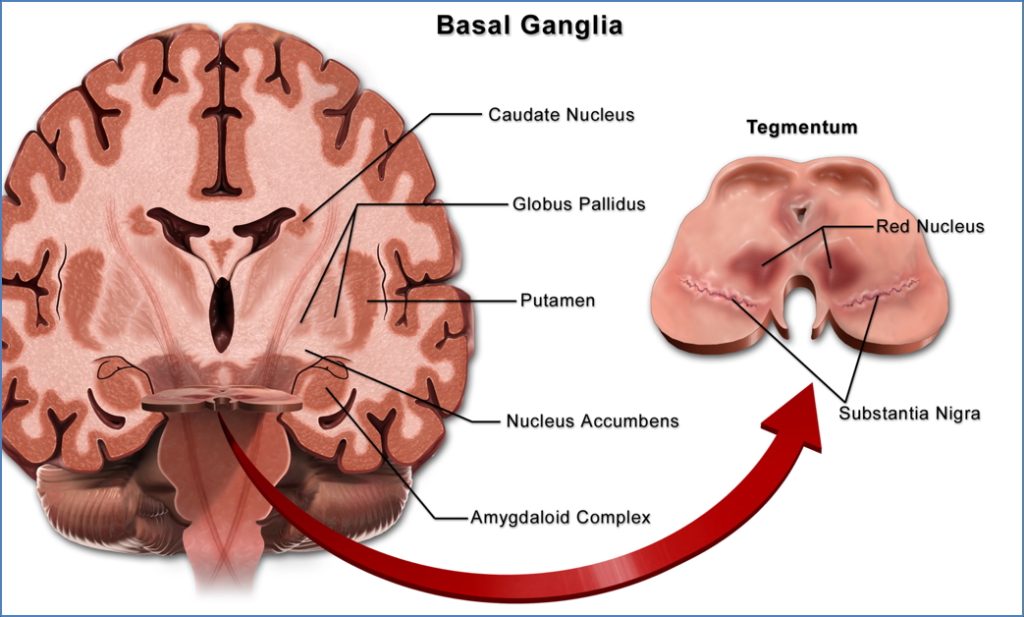
Cerebellum
Functions:
- Fine-tunes timing, coordination, and sequencing of muscle contractions
- Compares motor intention vs outcome (motor learning)
- Supports balance and posture
- Operates subconsciously
Feedback Loop:
Cortex → Pons → Cerebellum → Thalamus (VLo) → M1 → Spinal Cord
Cerebellar Inputs:
- From motor cortex, PMA, somatosensory areas via pons
- From proprioceptors (joints, tendons, muscles)
Cerebellar Outputs:
- Via superior peduncles to:
- Motor cortex (direction, force, timing)
- Brainstem (ventromedial/lateral motor tracts)

Processing Steps:
- Motor cortex informs cerebellum of intended movement
- Continuous proprioceptive feedback updates body position
- Cerebellum calculates optimal contraction variables
- Adjusts output to ensure smooth, coordinated execution
Analogy: Like an autopilot correcting a plane’s course, the cerebellum refines movement accuracy in real time
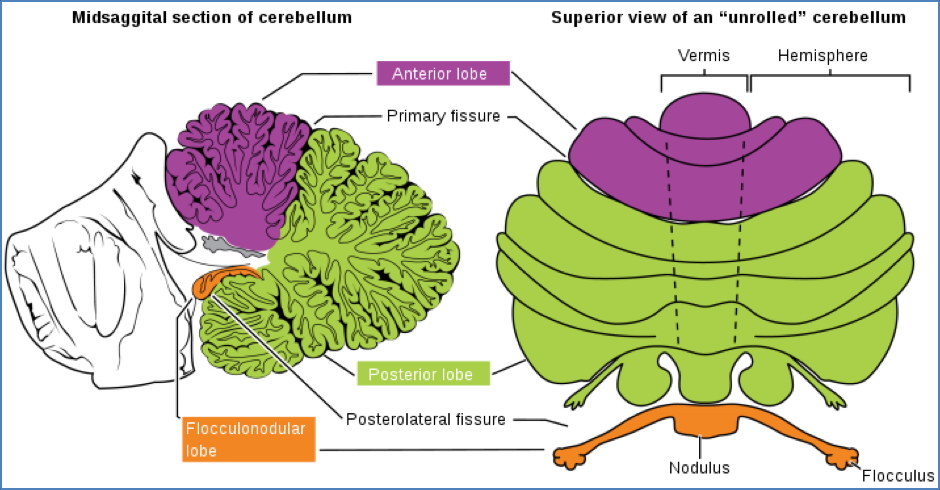
Summary – Motor Processing
Motor processing involves a tiered system that transitions from conscious planning to skilled execution. The prefrontal cortex and basal ganglia determine movement goals, while SMA/PMA and cerebellum refine and sequence output to ensure smooth, coordinated motor activity. For a broader context, see our Nervous System Overview page.